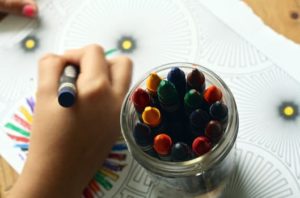Free Consultation
Free Consultation

As with any type of cerebral palsy, Athetoid cerebral palsy affects the muscle tone and ability to use those muscles. About 10% of all children diagnosed with cerebral palsy are diagnosed with Athetoid cerebral palsy. Athetoid cerebral palsy makes regulating muscle tone difficult, which makes independent living challenging. Luckily, there are various therapies and treatments to make life with cerebral palsy easier.
Those with Athetoid cerebral palsy experience a range of muscle tone issues. Some may experience hypertonia, which is unusually high muscle tone, causing stiffness and muscle tension. Conversely, some experience hypotonia, which is when there is unusually low muscle tone, leading to weakness. Since this type of cerebral palsy includes a range of muscle conditions, there are many different diagnoses that could occur. These can include:
Just as with all cerebral palsy, Athetoid Cerebral Palsy can be caused by a brain injury that occurs immediately before, during, or after birth. Specifically, an injury to the basal ganglia or the cerebellum causes this type of cerebral palsy. The basal ganglia is the part of the brain responsible for coordinating voluntary movement, as well as regulating thinking and learning. If the basal ganglia is damaged, motor function development is impaired. Cerebellum damage causes challenges with balance and coordination, as well as conditions affecting communication and attention.
Damages to these brain structures come from:
Similar to all types of cerebral palsy, some risk factors can increase the chance of a brain injury that eventually leads to cerebral palsy. These risk factors include premature birth, jaundice, and blood clots in the placenta.
Since this type of cerebral palsy causes both high and low muscle tone, there are many symptoms to look for. Some common symptoms between hypertonia and hypotonia are:
Signs of cerebral palsy begin appearing when the child is around 9 months old. Children this young can have Athetoid cerebral palsy if they:
Unfortunately, there is no cure for Cerebral Palsy, but with appropriate treatment, children with Athetoid Cerebral Palsy can live independent lives. Treatment can include physical therapy, speech therapy and occupational therapy. Physical therapy helps those with low muscle tone to strengthen and preserve their muscles. Speech Therapy can improve everything from speech impediments to breathing control. Occupational therapy assists with everyday activities, such as playing with other children and grasping objects. Medication may become necessary when there are secondary conditions due to brain damage, such as seizures and attention deficit disorders.
If you have any questions concerning your potential medical malpractice case, you can contact our attorneys by email or by calling (800) 762-9300 for a free consultation. You can also simply fill out one of our case intake forms, and one of our attorneys will get right back to you.
You Might Also Be Interested In: